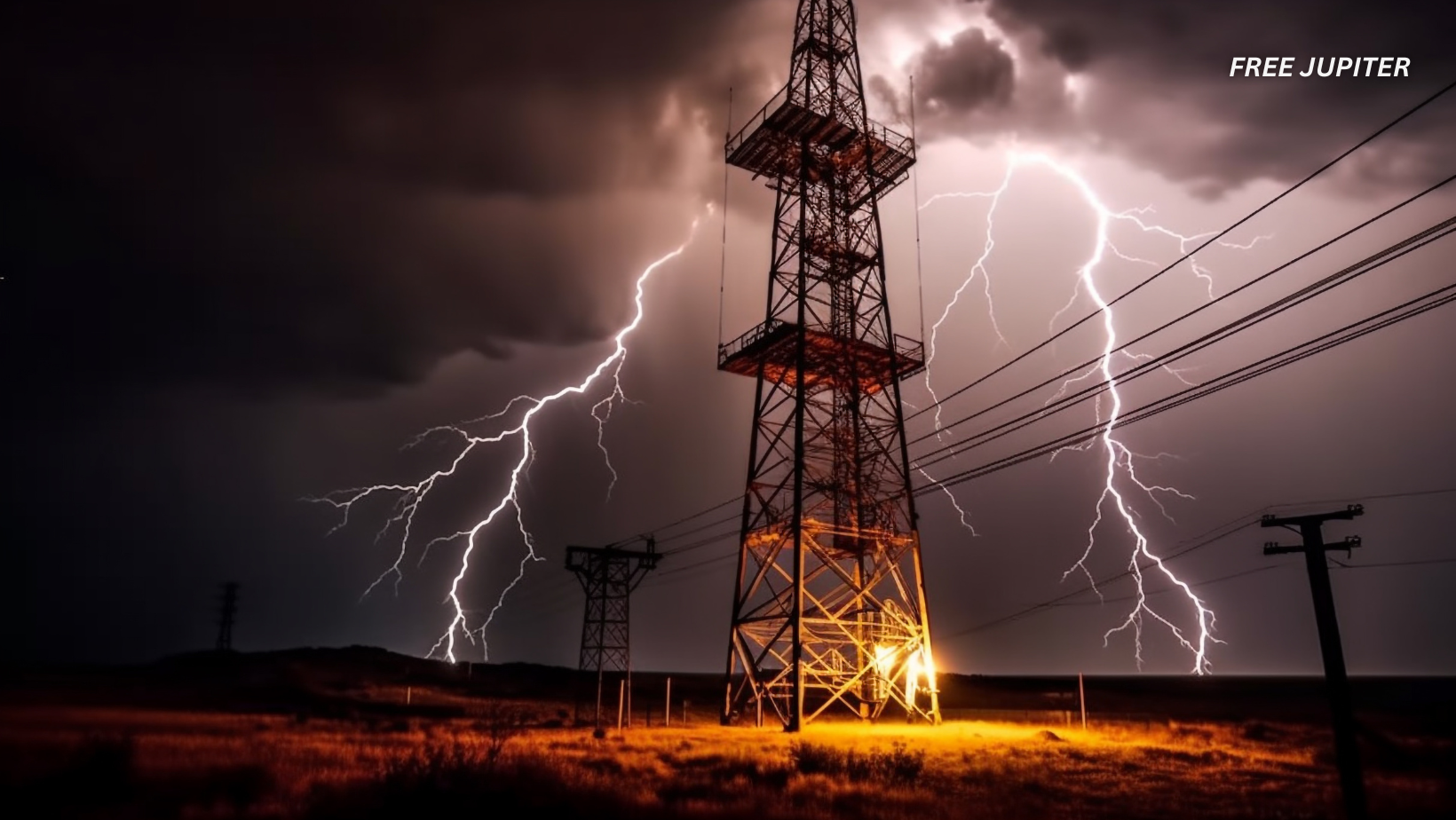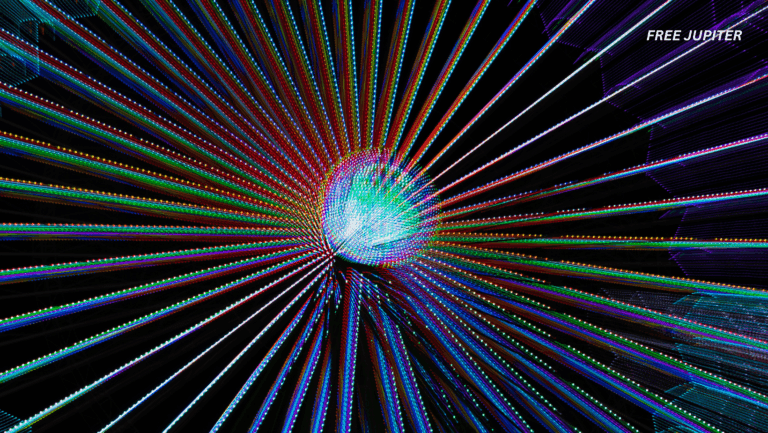Friendly Note: FreeJupiter.com shares general info for curious minds 🌟 Please fact-check all claims—and always check health matters with a professional 💙
Over a century ago, Nikola Tesla, imagined a world where electricity didn’t need wires. Instead of tangled cords and massive power lines, energy would leap invisibly from one point to another, like magic. At the time, this idea was so futuristic, it bordered on madness. But today? That “madness” might just power the future.
We’re now living in an era where Tesla’s long-lost dream is not only being taken seriously—it’s being built.
Electricity Without the Wires? Yep, It’s Happening
Across the globe, innovative companies and research institutions are working hard to untangle us—literally—from our dependence on cords and infrastructure-heavy power grids.
In the United States, a company called Wave Inc. is developing technology that transfers electricity through electromagnetic waves. In Japan, Space Power Technologies is working on orbital solar panels that beam energy from space back down to Earth. And over in New Zealand, a company named Emrod is already testing wireless power systems in the real world—not just in a lab.
What does that mean in plain English? Think of it this way: Instead of running power lines through forests, over mountains, or across oceans, companies could just shoot energy through the air using invisible beams. No poles. No wires. No digging. Just pure, wireless power.
How Does It Actually Work?
There’s no single method, but the basic concept is surprisingly simple: transfer energy through air instead of cables.
- Microwave Transmission: Think of this like a laser pointer—but for electricity. Devices shoot a focused beam of microwaves to a receiver (called a “rectenna”) that catches the waves and turns them back into usable electricity.
- Laser-Based Transfer: A more high-tech twist where laser beams carry energy to a receiver. It’s precise but can be interrupted by weather (like heavy rain or clouds).
- Inductive Charging: This is already in use for things like electric toothbrushes and some smartphones. It uses magnetic fields to move electricity over short distances. Scale this up, and you get things like roads that can charge your electric car as you drive.
- Space-Based Solar Power: This one’s the most sci-fi sounding but very real. Massive solar arrays are launched into orbit, collect energy directly from the sun (without clouds or night getting in the way), and then beam it back down to Earth using microwave or laser transmission.
All these methods rely on clever engineering and physics principles that, frankly, Tesla would probably be giddy about.
Read more: Stephen Hawking’s Final Research Paper May Have Predicted The End Of The Universe
Real-World Applications Are Already Underway
One of the most exciting projects is in New Zealand, where Emrod is partnering with energy companies to test wireless energy beams over long distances. Their goal? To provide electricity to places that are hard to reach using traditional means—like rural villages, remote islands, or areas hit by natural disasters.
Meanwhile, in urban areas, wireless EV charging is quietly gaining traction. Some cities are laying the groundwork (literally) for roads that can power electric vehicles as they drive. Imagine never needing to stop at a charging station—your car would just stay charged while you commute.
There’s even tech in development that allows drones to stay airborne indefinitely, refueling via wireless energy beams mid-flight. That could revolutionize everything from delivery services to search-and-rescue missions.
But Not Everyone’s Convinced Just Yet
As exciting as all this sounds, wireless electricity isn’t without its critics.
One big concern is efficiency. Right now, some wireless methods lose a good chunk of energy during transmission—especially over long distances. Wired systems are still more efficient, at least for now.
Then there’s safety. Beaming energy through the air raises questions: Could it interfere with other electronics? Is it safe for people, animals, or even birds flying through the beam? Developers say yes—systems are designed with safety in mind and have automatic shut-off features if something enters the beam path. Still, the public isn’t fully convinced, and that skepticism is a barrier to adoption.
Another issue is infrastructure cost. Building brand-new wireless systems doesn’t come cheap. In many places, traditional power lines are still seen as the more “economical” option, especially when governments are cautious about funding futuristic experiments.
Read more: Surgeons Have Achieved The First-Ever Robotic Heart Transplant Without Any Chest Cuts
But Science Is Charging Forward Anyway
Despite these concerns, top universities like Caltech and Purdue are pushing ahead. Caltech, for instance, recently launched a prototype into space to test the idea of harvesting solar power from orbit. The experiment successfully beamed energy back to Earth using microwaves—proof that the concept isn’t just a sci-fi fantasy.
Researchers are also refining rectennas—short for “rectifying antennas”—which are key to catching and converting energy beams efficiently. These aren’t bulky dishes either; they could be embedded into everyday surfaces, like rooftops or roads, making wireless power integration smooth and subtle.
And let’s not forget the green factor. Wireless electricity could dramatically cut down on emissions by enabling clean energy distribution in places where building traditional infrastructure is too hard or costly.
So…What Happens If This Actually Works?
If the world gets this right, the impact could be enormous:
- Power Access Anywhere: Remote communities, islands, or post-disaster zones could receive electricity with no need for poles or wires.
- EV Charging Without the Wait: Cars, trucks, even buses could stay powered in motion, reducing downtime and making electric transit far more practical.
- Less Infrastructure, Lower Costs: Over time, fewer wires and maintenance needs could lead to big savings on public utilities.
- New Business Models: Think wireless “power spots” like Wi-Fi hotspots—cafes or public areas that let you recharge without plugging in.
Read more: Teleporting Humans May No Longer Be Sci-Fi—A New Breakthrough May Have Made It Possible
Tesla Would Be Proud
Back when Tesla was pitching wireless energy ideas in the early 1900s, most people thought he was eccentric—or worse, delusional. But he may have simply been way ahead of his time.
Today, with lasers, rectennas, and satellite solar panels in play, the dream he imagined might just be switching on. Maybe not tomorrow, and maybe not everywhere yet—but the spark has already been lit.
In the not-too-distant future, you might walk into a building and your phone charges itself. Your car could refuel while waiting at a traffic light. Or a remote village hit by a storm could get its lights back—without a single wire in sight.
All you’d have to do… is flip the switch.










